Trees Birds Mammals Fish Amphibians Reptiles
Wild Algarve
Bookshop
Scarce Swallowtail - Iphiclides podalirius
Phylum: Arthropoda - Class: Insecta - Order: Lepidoptera - Family: Papilionidae

Identification
The Scarce Swallowtail is a large butterfly; its wingspan ranges between 6.5 and 8.0 cm. Its black tiger stripes are on a wing background that varies from fairly bright yellow in the first brood to almost pure white in second brood butterflies. The undersides of the wings are coloured very similarly to the uppersides but with less black colouring near the wing margins. There is no distinctive difference in patterning between males and females.
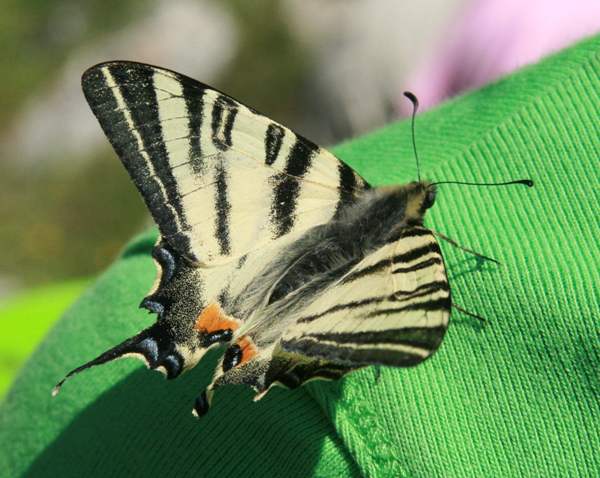
Distribution
Other than as a vagrant flying across from central and southern Europe, this large and majestic butterfly is absent from Britain. Its common name reflects the rarity of it being seen in Britain, where early lepidopterists named it. Certainly in France and many other parts of mainland Europe it is a more common sight than the Swallowtail, Papilio machaon, which is sometimes referred to as the Common Swallowtail.
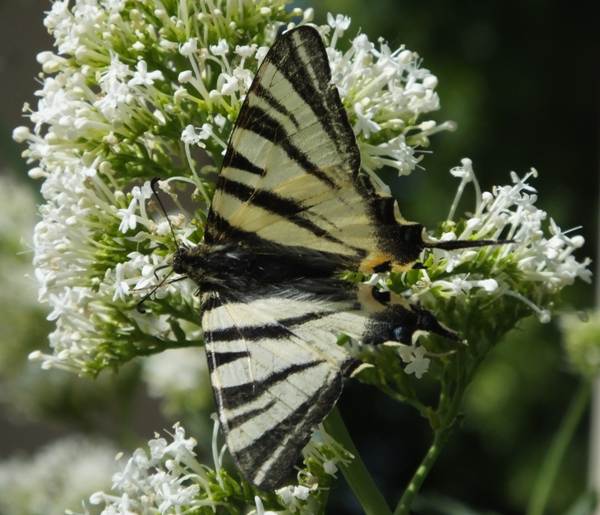
With climate change this once rare visitor to Britain may eventually be seen rather more often, but at present it is still unusual to see a Scarce Swallowtail anywhere except for the occasional migrant in the south-east of England. Scarce Swallowtails are a very common sight on mainland Europe and the Far East.
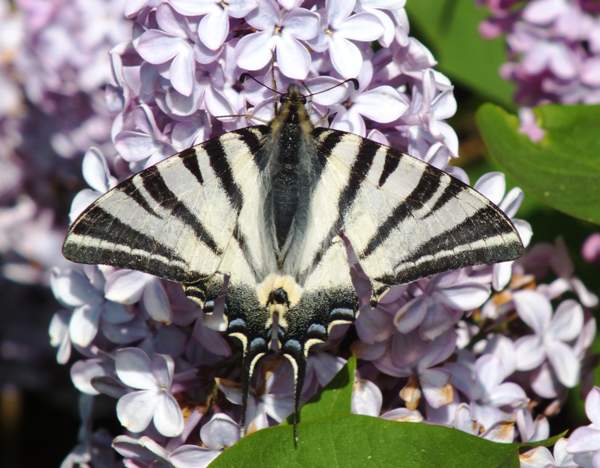
Lifecycle
The larval foodplants are various Prunus species including Almond, Cherry, Blackthorn and Hawthorn, on the leaves of which the near-spherical eggs, initially green, are laid. The eggs change colour as the embryonic larvae develop inside them.
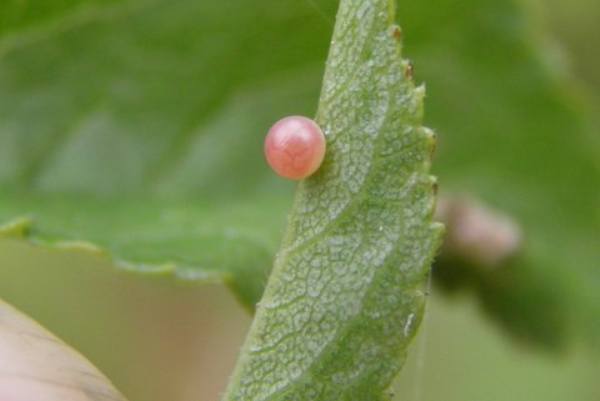
Above: egg of the Scarce Swallowtail on Prunus spinosa - Blackthorn or Wild Sloe
In the northern half of its range the Scarce Swallowtail produces just one brood between May and July, while further south there are two or even three broods between May and August; the Scarce Swallowtail can be seen on the wing until late September or early October, depending on location.
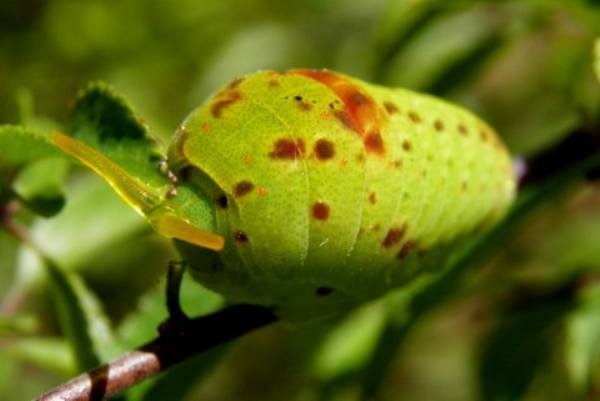
Above: Mature larva displaying its forked osmeterium
Dark brown when very young, the caterpillars soon turn bright green and develop fine yellowish dorsal and side stripes. The larvae usually develop an osmeterium, a retractable fleshy organ on the first segment of the thorax that serves as a defence mechanism by giving off an unpleasant odour.
This butterfly species overwinters in its pupal stage inside a buff-brown chrysalis; however, where an earlier summer brood occurs the chrysalises are green (and hence well camouflaged against a background of foliage).
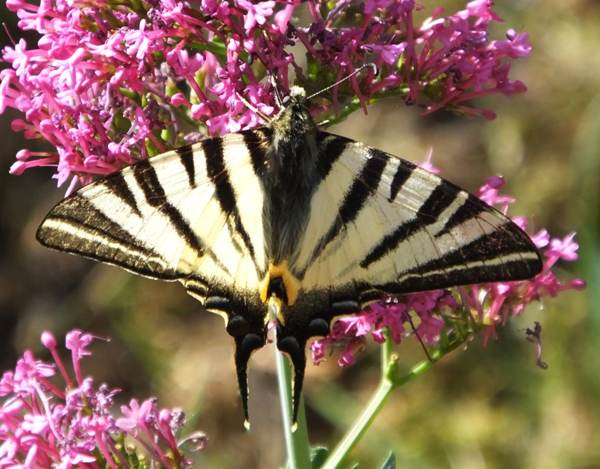
Acknowledgements
This page includes pictures kindly contributed by Steve Jelf.
Studying butterflies and moths...
Excited by rivers and streams? So are we, and we're pretty sure you would find the Winding River Mystery trilogy of action-packed thrillers gripping reading too. Dead Drift, Dead Cert, and Dead End are Pat O'Reilly's latest river-based novels, and now they are available in ebook format. Full details on our website here...
Buy each volume in ebook format for only £2.47 on Amazon... Paperbacks also available on Amazon at £6.95 each. All proceeds go towards keeping the First Nature website online.
Please Help Us: If you have found this information interesting and useful, please consider helping to keep First Nature online by making a small donation towards the web hosting and internet costs.
Any donations over and above the essential running costs will help support the conservation work of Plantlife, the Rivers Trust and charitable botanic gardens - as do author royalties and publisher proceeds from books by Pat and Sue.